As subjects go, Prong collars are pretty divisive in the dog world.
When the parents of a large dog (particularly, though small breeds are not exempt) raise the question of loose leash walking or stopping their dog from pulling on their leash, the subject gets heated fast. “Prong collar is the only way”, “Headcollar” “training” “harness with a front point” “Balance harness” etc etc. And then comes the debate of aversive vs positive. Inevitably inaccuracies get thrown around and overall? There’s a lot of myths and a lack of information because it all comes from a passionate place.
I mean, afterall, if you’ve been using a tool for 30 years with your dogs (or even 3 months) you don’t want to find out that you’ve been doing a bad thing, or that if you’ve been sucking it up and using a harness, you don’t want to find there’s potentially an easier option.
So, I want to discuss one of those options for you now, so that you, my dear puppy parent, understand what you’re looking at when assessing these options for you and your little pup. Because you deserve information that is clear, truthful and backed by science or the information of the manufacturer.
Finding the best method for both you and your dog is really important, so I must discuss it.
I’m going to discuss what they are, how they work, why they work. Discuss with you when they should be used and when they shouldn’t. What they’re made to do, and what they’re not made to do.
All of the images in this post contain dogs who are wearing prong collars incorrectly.
This is deliberate! As you go through the article, see if you can tell why they’re wrong.
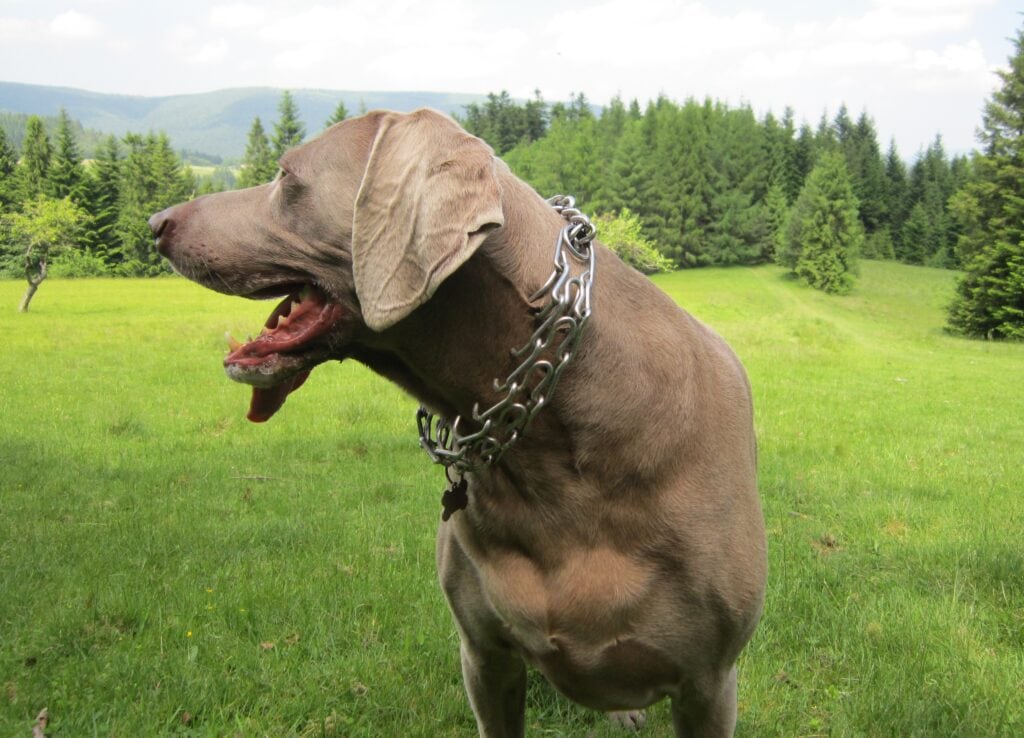
What Is A Prong Collar
A prong collar (also called a pinch collar) is an example of a dog training collar, and usually replaces a flat collar. It’s an adaptation of choke chains, the links become larger and there are “teeth” on each link that encircle the neck. The collar is designed to create even pressure around the neck and distribute the ‘correction’ so it can be considered ‘kinder’ than a choke collar, choke chains, or slip leash alternative.
However, it is good to note that the prong collar works by giving a ‘leash pop’ or ‘correction’ through the leash, a quick jerk on the leash results in a sudden constriction of the neck.
Now, lots of trainers will tell you that this doesn’t hurt the dog, that it merely tells them no in a language they understand.
Whilst that may be true, it’s not something we have data for, and bearing in mind that a dogs neck is 3x more sensitive than ours, and they definitely restrict airflow for a short time, it’s arguable that this device goes against animal welfare rights and are subsequently banned in certain countries like Australia, New Zealand, Austria, Switzerland and the Canadian Province of Quebec.
Of course this can be argued as human error, but sometimes it’s just easier to control the situation than remedy the fallout…

How Does A Prong Collar Work?
This one is really important, before you use any tool with your dog that you understand how they work and why your dog will respond to it – especially when they cannot communicate their needs or feelings clearly.
The prong collar (similar to a choke chain or slip lead) works on constriction. It’s structured like a martingale collar, where the bulk of the collar is tightened by a cinching chain which attaches to your leash. What is different about a prong collar is that as the martingale tightens it brings in “teeth” or prongs. These are then used when you want to apply a “Correction” (also called a leash pop) that press into the skin around your dog’s neck to apply discomfort or pain in order to communicate that your dog has done something incorrectly.
Then, when they do something right, or are questioning themselves, the fact you don’t pop the leash means that they get a rush of relief.
However, it’s really important that throughout the process of training a dog with a prong collar that we are aware, that we admit that it causes pain or discomfort in order to have an effect. This gives respect for the tool, and means that you’re less likely to misuse it. And if your trainer tells you that this is not the case, then they’re not a trainer you should be working with.

When To Start Using A Prong Collar
So, the time to start using it is whenever you’ve genuinely exhausted your options when you’ve tried the kinder methodology, you’ve tried a professional positive trainer, and you’ve gotten to a point where your dog cannot progress despite your dedication, patience and addressing all of the aspects of your dog’s life that may be inhibiting their learning.
According to Herm Sprenger:
“They [Prong Collars] are not recommended unless other training methods have been exhausted.”
Herm Sprenger
You should be exhausting other means before resorting to a prong collar. And I know that sometimes it can feel like you have done so, but typically? That’s not the case.
A prong collar is a device that has good and bad points to it, but as we’ll go into later, it’s ripe for misuse. Whilst I would hope you’d use it right (though, I don’t think I would trust myself to use it right consistently over long periods of time), it also doesn’t surpass the fact that you can probably achieve your loose leash walking goals way easier than banishing your pup or dog to this device.
Can I Use A Prong Collar On A Puppy?
No, they are not suitable for use on a puppy. Whilst Herm Sprenger advise that 5-6 months is the minimum? I would argue a year to 18 months is the minimum you should be considering this tool.
Why? Because puppies learn really easily. Like… really easily. I don’t care what breed you have, how strong they are, or how small you are. You can have a dog who listens well, learns well and as a puppy? They’re primed for that. That’s what they were built for, is to learn. (If you’re struggling to teach a loose leash, this is for you.)
All you have to do to unlock that? Is to figure out how to communicate with them. If you can figure that out? You don’t need a prong collar. You can walk your dog around without a collar, harness, leash (please don’t do it in public, there are laws in place) and they will listen to you every step of the way.
Oh! And if you follow my guidance with pupdates? You won’t ever get to this stage, because you’ll be practising a loose leash long before they’re large and unruly!
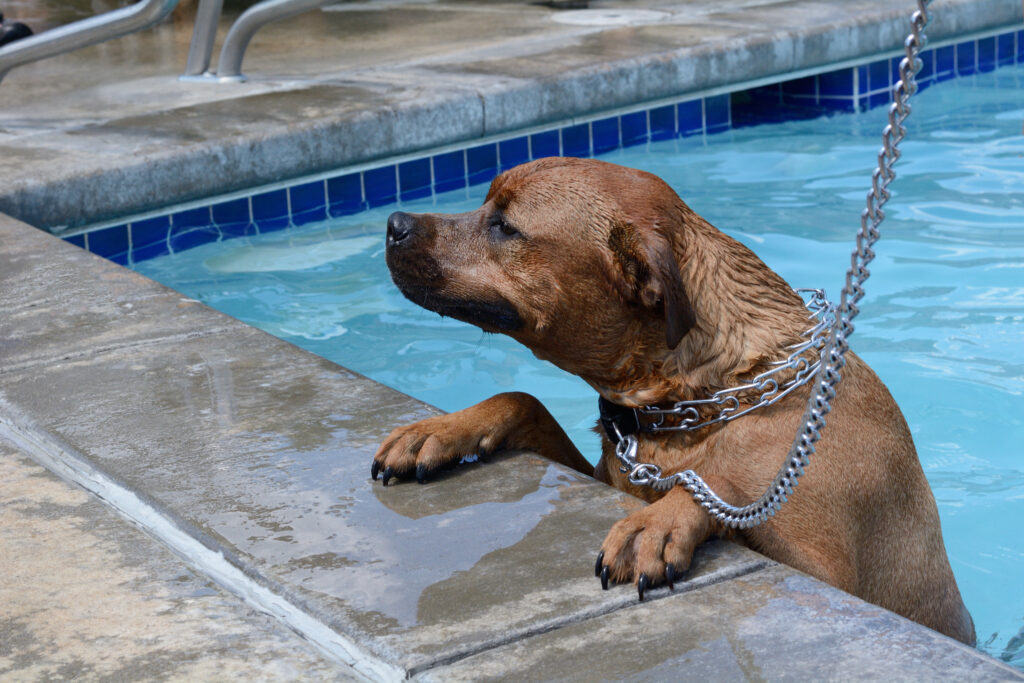
Are Prong Collars Harmful To My Dog Or Puppy?
They certainly can be if misused.
Misuse covers :
❌ poor or incorrect placement on the dog.
❌ poorly fitted collars or incorrectly sized.
❌ incorrect timing of ‘corrections’
❌ allowing dog to self correct.
❌ used in the car (especially to secure in the car)
❌ worn in a crate
❌ Attempting to solve incorrect problems with a prong
❌ long durations wearing a prong
❌ when used on the underaged
❌ when used on shy dogs
❌ when used on scared dogs
❌ when used on aggressive dogs
❌ when used whilst not defined training sessions
❌ when used whilst unattended
❌ when used with anything other than a short leash
With this volume of no-no’s it’s so freaking easy to get wrong that can cause damage to your dog physically, mentally, or just to the bond between you and your dog. Not to mention that the window of opportunity for use becomes so slim that these dogs are actually probably really easy to train anyway.
This is where a lot of pro-prong people will say “But my dog loves their prong” – which is great, but in the same way you’ve conditioned them to love that prong? You could have taught a loose leash without a prong. Or I could actually teach them to love a jellyfish on their head…
So yes, Prong Collars can have the ability to be very harmful, very easily.
How To Position A Prong Collar
The proper positioning for a prong collar is right at the top of the neck, where the skull meets the neck muscle as this is the most ‘vulnerable’ part of your dog, where the prong collar will yield maximum effect for training and consequently the desired result. However, the tool will work no matter where it’s been placed.
It’s good to note that a dog’s neck is 3x more sensitive than a human neck, so we really do not need to use much pressure.
Can You Leave A Prong Collar On A Dog
No.
Prong collars are designed to be on your dog for the duration of training only. ID tags should not be put on a prong collar, and your dog should not be left in one for long periods of time. Doing so exposes your dog to an inordinate amount of danger, damage and risks that just are not worth talking about.

How To Train Your Dog Off Of A Prong Collar
This is a really simple. Decide which equipment you would like your dog to walk on, and grab a double ended leash, like a halti training leash, and clip the prong to one end of the leash, and the harness or collar to the other.
As your need for corrections lessen, allow the balance of the leash to lean towards the harness, and away from the prong.
Slowly, you’ll transfer all the leash to the harness or collar, and leave the prong collar on, but unattached (still for short periods please, and under constant supervision!) and eventually? Remove the prong collar entirely.
Of course, if you see regression, then make sure that the previous training method is reverted to.
Is A Prong Collar Bad?
They certainly have the potential to be.
This is a really subjective question. My personal stance? Yes they’re bad, because they have far too large an ability to be misused. Whilst I know that the potential for misuse is not a reason to call something bad, it’s mainly a method of training that I see no reason for.
In my years of dog training (at this point, I’ve been involved in training over 1300 dogs and won awards), I’ve never found a reason for a prong collar that cannot be resolved with positive training.
Yes, positive training will take longer and will be harder work, but is that any excuse to resort to something that will make your dogs life uncomfortable? I don’t think so. Also, the result of positive training isn’t dependent on the presence of the device… which is definitely a good thing.
The other reason I would advise against prong collar usage is because of the time in which you have to apply the ‘correction’.
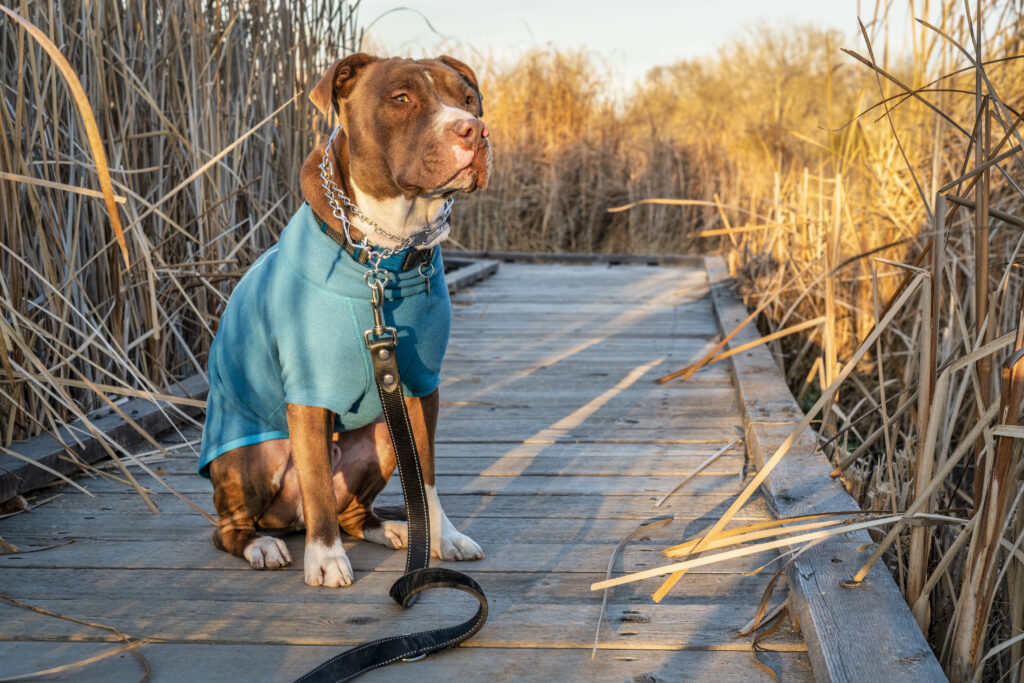
You have 2 seconds to capture a behaviour, right or wrong, reward or correction.
With positive reinforcement, you can use a marker word, and reward to give you a little longer for the treat/play reward. But for corrections? You have to interpret the action, and tell your arm to move at a certain speed/pace/whatever else and deliver it quickly, or else your dog will not understand what you’re correcting.
If that window is that small and you make a mistake, would you prefer to be delivering confusing rewards, or confusing punishment?
Are Prong Collars Suitable For A Reactive Dog?
No. This is supported by Herm Sprenger, the top manufacturer of prong collars in the world.
Anything pain based is not suitable for a reactive dog.
Dogs become reactive (largely) through fear or excitement. Negative experiences that they have learned to problem solve with looking mighty scary, scare the other dog away, and then safety is restored. It’s another self-rewarding cycle.
Adding in a prong collar and ‘correcting’ their fear (aka. A jerk on the leash to suddenly, quickly restrict airflow as the teeth of the prong squeeze the neck, often misappropriated as a ‘mommy bite’ – I’ll discuss that one another time…) actually just reinforces the idea that they were right to be scared of the oncoming threat.
Over time? This forces the dog into a state of learned helplessness. This sort of state is not a state where learning can occur, it’s a state where all their options have been removed.
The analogy used by a lot of people is imagine your worst fear, and then someone sitting there and forcing you to face it.
Prong collars are not suitable for anything fear-based, which is where reactivity falls.
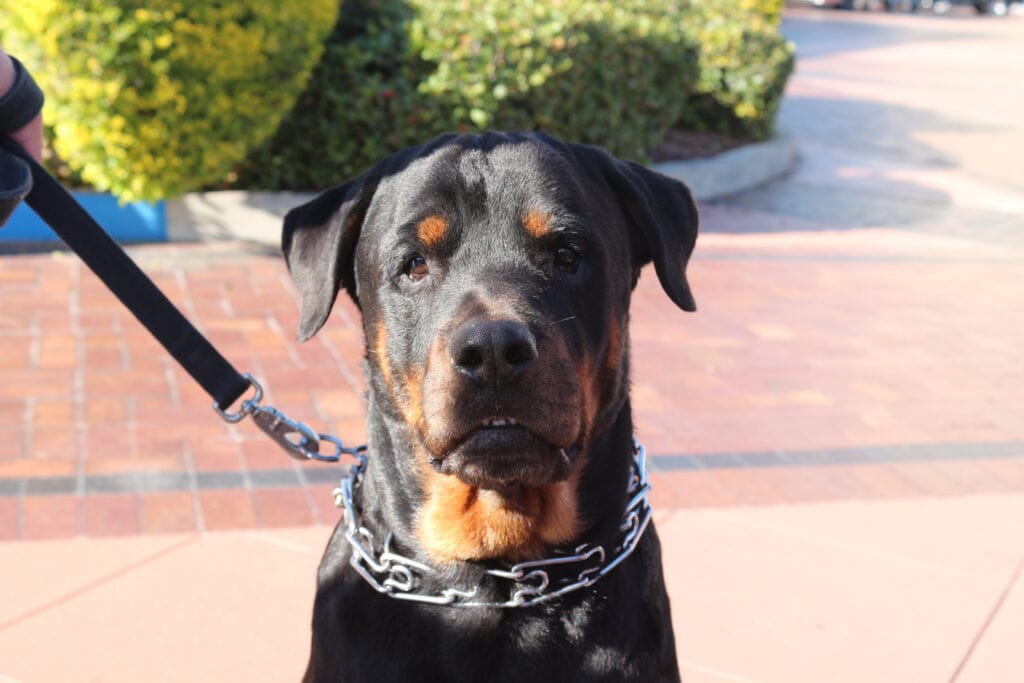
My Opinion On Prong Collars
Regardless of my training preferences. Prongs are widely, widely misunderstood and consequently widely misused.
The fact that a reward or a correction can only be given within 2 seconds of the action for either to be of effect means that your reactions have very slim windows to achieve their goal. Consequently, it’s my advice to not use ‘corrections’ because they’re too easy to miss. If you’re going to miss something, would you rather that your dog misunderstood a reward, or a punishment? The former associates you as a good thing, the latter associates you with bad things.
With the use of a prong collar, you immediately become your dogs source of punishment.
The use of these tools in any ‘body’ of work (such as on police k9’s) is not an excuse for you to use them on a pet dog. It does not lend them any credibility. It in fact dates the police academy’s training techniques back to the 1990’s, along with their computer systems and their approach to the law… is that something you really wish to stand with?
The “My dog loves his prong, and get’s all excited when he sees it” is simple classical conditioning, such that your dog recognises that means training or walkies, that doesn’t mean that they feel positive about the experience when the prong tightens around their neck.
I mean, I can train your dog to see a lemon and think it’s the best thing in the world – it doesn’t mean they’ll like the taste of lemon.
It’s a tool that I believe, like headcollars, people use as a shortcut in their training. They take the easy route, as opposed to teaching proper, solid cues and commands.
Oftentimes, breed is an excuse “Oh, he’s a German Shepherd, he needs a prong or he’ll be out of control” well… no… that’s not really true is it? It means that you’re not in control. That means that you have failed in training your dog and have taken a shortcut instead of learning to understand and work with your dog.
I mean… zookeepers train tigers. A bloody Tiger!!! With positive reinforcement. That creature is way stronger and way more dangerous than a german shepherd… so why keep perpetuating the same rubbish?
Training is still required.
Even with a prong? You still need to train your dog. And Herm Sprenger agrees.
“No collar will permanently fix a dog’s bad behavior. This needs to be done with good training. A prong collar will give you a bit of “power steering” with a larger dog that pulls hard, but it’s no substitute for training.”
Herm Sprenger
So… if you’re training? Just train the right way… the first time and don’t seek shortcuts.
If You Do Decide To Use A Prong Collar
✅ Exhaust other options
✅ Fit it properly
✅ Use an experienced trainer (who admits what it is and how it works)
✅ Use as designed
✅ Pick a quality one (no rubber tips!)
✅ Don’t forget to train them off of it.
✅ Familiarise yourself with canine body language, particularly stress signs.
Whilst I don’t agree with them, that doesn’t mean you have to. If you decide this is your right path, just make sure that you’re going into this as prepared as you can, because you owe it to your dog to do so.
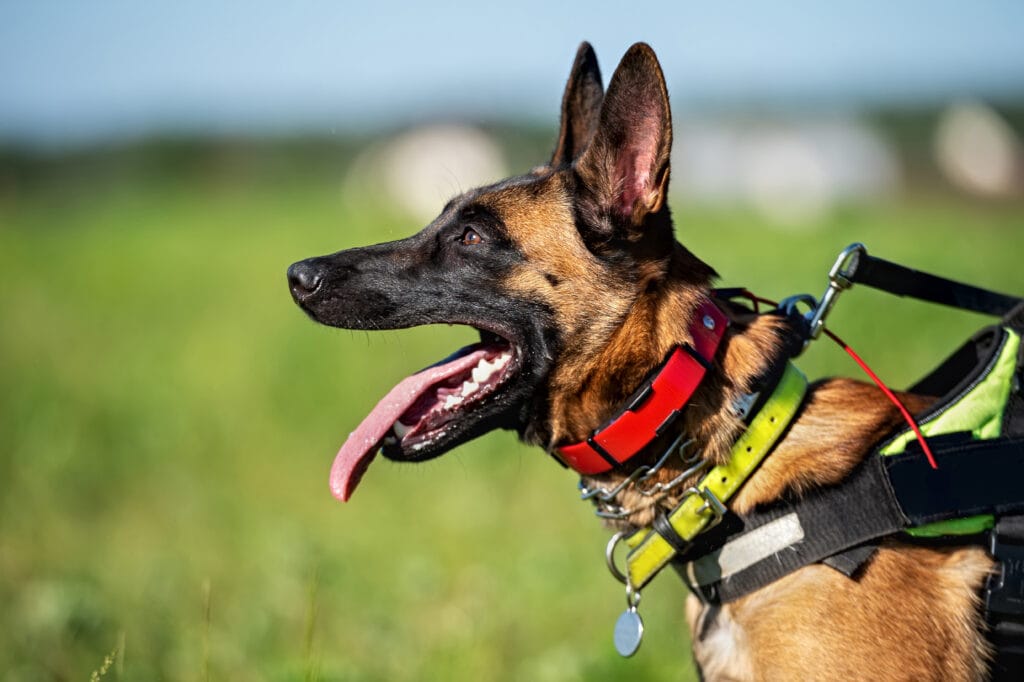
A Note About Herm Sprenger
Whilst the product is clearly quality, and I love that they actually give you most of this information – the information is rather buried. It should be something a little louder and prouder on their site. It’s a large part of what drove me to write this blog post was because people are using these tools and are not actually looking at the whole page, reading all the information and are consequently making poorly informed decisions.
Or, they’re making their decision based on the word of a trainer who is practicing with outdated techniques – which is a really easy mistake to make.
My hope? Is that this information gets shared, lots. That it appears on google when people search “Prong collar for my dog” and they have the opportunity to learn. The information is readily available, but it is a little more buried than I would like to see.
So please Herm Sprenger! Stand behind your product and tell people openly the truth!
Challenge Accepted.
Oftentimes Prong collars are brandished around as the holy grail of owning a dog. But they’re not.
Simply put? They’re a shortcut.
A shortcut that compromises too much for me to feel comfortable using one or recommending one when there are tried and tested methods that don’t require one.
There’s rarely a time where a prong is genuinely needed in a good relationship with your dog. And if you genuinely feel like that’s the case? Fine, but I promise you (challenge me if you want! Positively, constructively and with an open mind) there’s a positive solution you can take to achieve the same goal. No matter how prey driven, no matter how strong. No matter how ‘stubborn’. You can do it with patience and guidance.
Honestly, I know, I’ve taught a great, reliable loose leash (even without the leash) a lot with all sorts of dogs, all sorts of breeds. It’s about patience and consistency. That’s all. You have that. We all have that. We just have to apply it.
If you want the bones of how to train your dog to walk on a loose leash without a prong collar? Try this post, and if you need more help? Have a read of how to train your dog to walk loose leash.

Author, Ali Smith
Ali Smith is a professional, qualified, and multi-award winning trainer is the founder of rebarkable. She has always believed animals deserve kindness and champions force free methods. Believing that dog guardians will all choose the kindest options if proper information is provided, she aims to help all dog guardians who need it and make dog training as accessible as possible
Ali lives win Maryland, US with her husband and her three dogs.
P.s. Pssssst – Every single image I could find on my stock photo provider was a prong collar being misused. Can you tell me why they’re being misused? I’ll let you know if you’re right!






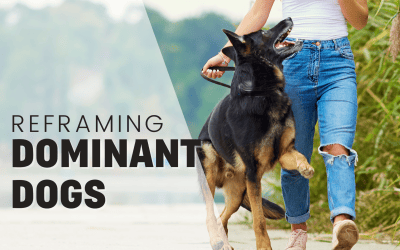
0 Comments